Description
Clindapharm topical gel is a pharmaceutical product containing the antibiotic clindamycin that is used to treat skin inflammation, especially acne vulgaris. This gel, with a transparent and non-greasy structure, is quickly absorbed by the skin and exerts its effect deep within the skin pores. Clindapharm is considered a prescription drug that is often prescribed by dermatologists for short-term treatment courses.
The main use of this gel is in controlling inflammatory acne, whiteheads and blackheads, as well as reducing acne-causing bacteria such as Propionibacterium acnes. Given the high prevalence of acne in adolescents and adults, Clindapharm gel is known as one of the most widely used options in the treatment of this skin condition. Various products are used to treat acne, one of the best of which is Clindapharm or clindamycin topical gel. This gel is a topical antibiotic that helps improve acne by reducing the number of acne-causing bacteria and inflammation and redness of the skin.
Mechanism of action of Clindapharm topical gel
Clindamycin, the active ingredient in Clindapharm Gel, is a lincosamide antibiotic that inhibits protein synthesis in bacteria, thereby stopping their growth and reproduction. This process occurs through the drug's binding to the 50S subunit of the bacterial ribosome.
The antibacterial effect of clindamycin directly reduces the density of bacteria on the skin. On the other hand, the reduction in microbial load also inhibits the skin's inflammatory response, thereby significantly reducing the redness, swelling, and pain caused by acne. This dual property—antibacterial and anti-inflammatory—makes clindamycin an ideal option for the management of inflammatory skin lesions.
How Consumption Gel Local Clindamycin | Clindapharm
To use clindamycin topical gel, first wash and dry your hands and the affected area. Next, apply a small amount of the gel to the affected area and massage gently until absorbed. Just be careful not to let the gel come into contact with your eyes, mouth, or nose. For best results, use the gel regularly as directed by your doctor.
The correct use of Clindapharm gel plays a decisive role in the effectiveness of the treatment. First, the skin must be thoroughly cleansed and dried. Then, a small amount of the gel, usually the size of a pea, is gently applied to the acne-affected areas. This process is usually done twice a day—morning and evening.
During the treatment period, the use of irritating skin products such as scrubs, alcohol-based toners and acid-containing masks should be avoided. Also, direct contact of the gel with sensitive areas such as eyes, mouth and mucous membranes should be strictly avoided. In case of excessive dryness or unusual irritation, it is necessary to reduce the frequency of use or consult a doctor.
3 uses Clindapharm topical gel | Clindamycin
As mentioned, Clindapharm topical gel, which contains the active ingredient clindamycin, is one of the most common medications used to treat skin problems, especially acne. Clindamycin is a type of antibiotic from the lincosamide group that helps reduce skin inflammation by inhibiting the growth and reproduction of bacteria. This drug is used topically and, by penetrating the skin pores, directly combats acne-causing bacteria, especially Propionibacterium acnes. Here are three common uses for Clindapharm gel:
-
Treatment of acne vulgaris (facial pimples):
The most important and well-known use of Clindamycin is in the treatment of acne vulgaris, or common acne on the face. This medication provides significant improvement in skin condition by inhibiting acne-causing bacteria and reducing inflammation. Regular use of Clindamycin Gel can lead to a reduction in redness, swelling, and size of acne. -
Reducing the number of pimples and preventing the formation of new ones:
Clindamycin not only treats existing acne, but it also reduces the likelihood of new breakouts by controlling skin bacteria, making it an effective option for people who struggle with acne on a regular basis. -
Treatment of moderate to severe acne:
In cases where acne is more severe and accompanied by deeper, more painful inflammation, Clindamycin Gel can be part of a combination treatment plan. In these cases, your doctor may also recommend the use of retinoids or benzoyl peroxide to enhance the therapeutic effect of Clindamycin.
However, self-medication with this medication is not recommended and it is best to use it under the supervision of a doctor to avoid side effects such as dryness, burning, or irritation of the skin. As mentioned, Clindapharm topical gel is an antibiotic and is used to treat Skin problems It is used.
Cases Prohibition Consumption Gel Local Clindamycin
Any medication should be taken under the supervision of a doctor, and clindamycin topical gel is no exception. Certain conditions in individuals and their medical history can be a strong reason not to use this gel, some of which include:
- People with allergies to clindamycin or lincomycin
- People with ulcerative colitis or enteritis should use with caution.
- People with a history of severe diarrhea caused by antibiotic use should be careful when using this product.
3 advantages of use From Gel Local Clindapharm
To have clear and healthy skin, you need to take good care of this divine blessing. In addition to proper nutrition and adequate sleep, it is also essential to use skin care products, each of which has its own advantages and disadvantages.
Below are some of the benefits of using Clindapharm topical gel:
- Reduces skin inflammation and redness: This gel reduces the number of acne-causing bacteria, thereby reducing inflammation and redness of the skin and giving your skin a beautiful appearance.
- Reducing the number of pimples and acne: If you use this gel continuously, your skin will become clearer and more beautiful day by day.
- Improves skin appearance: Regular use of Clindapharm topical gel will eliminate blackheads and whiteheads from your skin.
Disadvantages Use From Gel Local Clindamycin
Using any medicine, along with having many benefits, may also be harmful to some people. Paying attention to people's health, medications used, age, gender, etc. can affect the choice of pharmaceutical products; and as you know, not all medicines are suitable for everyone. Below we will mention some of the side effects of clindamycin topical gel:
- Dry skin: For people with dry and sensitive skin, using this gel can be problematic.
- Burning and itching sensation: Using clindamycin topical gel may cause a burning and itching sensation on the skin in some people.
- Skin peeling: If you have sensitive skin, you may experience redness and peeling.
- Abdominal pain: In very special cases, your body may react more severely and experience bloody diarrhea or severe abdominal pain, in which case you should definitely see a doctor.
CommonThe most QuestionI see In Case Gel Local Clindamycin
Despite all the explanations given, there are still questions about clindamycin topical gel, which we will address below:
Can this medicinal product be used during pregnancy?
Based on research, it is not yet clear whether using clindamycin topical gel (Clindapharm Topical Gel) will harm an unborn baby. However, if you are pregnant, be sure to consult your doctor before using it.
How long does it take to see results from using Clindapharm topical gel?
Don't rush. It takes time to see the effects of skin products. You may have to wait a few weeks to see results from using this product.
Can clindamycin topical gel be used while breastfeeding?
If you want to use this gel around and around the breast area, make sure your breast does not come into contact with the baby's mouth.
Conclusion
Clindapharm topical gel is an antibiotic used to treat acne vulgaris and gives your skin a beautiful and radiant appearance. But like any other medicine, along with its many benefits, it has side effects for certain people. For this reason, you should definitely consult your doctor before using it.
Please keep in mind that the above tips are intended to increase public awareness of pharmaceutical products and to introduce the benefits of Clindapharm topical gel. To use the product, be sure to consult your doctor and follow his or her instructions.


Reviews
There are no reviews yet.